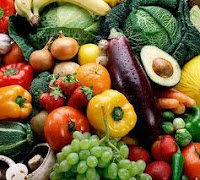Clearing some of the Confusion on Calories, Carbohydrates and Gluten
 The fortunate ability to be around a health club is the ability to listen to everyone’s opinion about health. I myself, have to depend on research and fact to defend my position as a juice bar owner. I do not guess at what the healthy products I sell can do for you. I defend them with fact.
The fortunate ability to be around a health club is the ability to listen to everyone’s opinion about health. I myself, have to depend on research and fact to defend my position as a juice bar owner. I do not guess at what the healthy products I sell can do for you. I defend them with fact. I do not rely on gossip and rumors to find the real definition of the nutritional facts of the food used in the juice drinks. However, with that said, I also take light of the simplicity of the fact and remove all the news and media hype...in other words... when someone asks what an orange is good for, i just answer "everything". Sure if they want, a scientific breakdown I will go find one...but really, Oranges, apples, bananas, carrots, spinach etc are just good for you all over. It is also a start of a process of getting a healthy.
I have located some definitions to some of the terms companies, internet, and the media throw around especially on food labeling and in health clubs every day. Amazing how much American products have brainwashed us to reading the labels and yet we are still the most over weight country. In countries like France, they smoke, drink, eat late, and invented the word lounge...yet they are thinner than Americans...are

 People use the term calorie in the gym so often yet, many do not really know what a calorie is, or why we have to burn them or use them for energy...I am here to help. The elicit carbohydrate... found in almost all food... is another true mystery. The new but not old "gluten-free" zone...who knew the glue that holds the wheat together in bread would destroy our digestive system...or does it. Regardless to the gossip or labeling on food products, companies want to get you to buy their products. The latest scams.(FOOD WATCH): An article from: Nutrition Action Healthletter
People use the term calorie in the gym so often yet, many do not really know what a calorie is, or why we have to burn them or use them for energy...I am here to help. The elicit carbohydrate... found in almost all food... is another true mystery. The new but not old "gluten-free" zone...who knew the glue that holds the wheat together in bread would destroy our digestive system...or does it. Regardless to the gossip or labeling on food products, companies want to get you to buy their products. The latest scams.(FOOD WATCH): An article from: Nutrition Action HealthletterFirst, let us define the calorie
1. Either of two units of heat energy.
2. The energy needed to raise the temperature of 1 gram of water through 1 °C (now usually defined as 1868 joules).
Thermodynamics
a. Also called gram calorie, small calorie. An amount of heat exactly equal to 4.1840 joules. Abbreviation: cal
Physiology
A. a unit equal to the kilocalorie, used to express the heat output of an organism and the fuel or energy value of food.
B. a quantity of food capable of producing such an amount of energy.
Calories are food energy used to make the body function. Even sedentary (sitting still or sleeping) we burn calories. Each organ uses a certain amount of energy to function; our hearts and brains need energy. We are power plants converting food into energy 24 hours a day 7 days a week. We do not have the choice to turn it off until we die. So regardless of the outcome a person need calories to burn just to function. The more precise scientific term kilocalorie, which represents the amount of energy, required to raise the temperature of a liter of water one degree centigrade at sea level.
The common usage of the word calorie of food energy is understood to refer to a kilocalorie and actually represents, therefore, 1000 true calories of energy. A calorie is also known as cal, gram calorie, or small calorie.
Okay... so here is the rule there are no such things as good or bad calories... Just calories. It is up to you to decide if you want those calories from a donut or from whole wheat bread.
Carbohydrates
Mainly sugars and starches, together constituting one of the three principal types of nutrients used as energy sources (calories) by the body. Carbohydrates can also be defined chemically as neutral compounds of carbon, hydrogen, and oxygen. Carbohydrates come in simple forms such as sugars and in complex forms such as starches and fiber. The body breaks down most sugars and starches into glucose, a simple sugar that the body can use to feed its cells. Complex carbohydrates are derived from plants. Dietary intake of complex carbohydrates can lower blood cholesterol when they are substituted for saturated fat.
Etymology: Carbohydrates are called carbohydrates because the carbon, hydrogen and oxygen they contain are usually in the proportion to form water with the general formula Cn(H2O)n.
Carbohydrates are the body's most preferred source of energy. They make up, by far, the largest volume (60%) of our daily food. They are taken in the form of all foods made up of grain flour, cereals, pasta, potatoes and other vegetables, and also in the form of sugars contained in fruits, syrups, honey and candy, as well as in the pure crystalline form of our familiar table "sugar".
SIMPLE CARBOHYDRATES
Simple carbohydrates are quick energy sources, but they do not usually supply any other nutrients or fiber.
Glucose is the major kind of simple sugar. Glucose is the basic source of energy for all living things. Glucose supplies the body with quick energy. It occurs naturally in some fruits and vegetables and is produced in the body by breaking down other foods into glucose.
Sucrose: commonly known as table sugar, beet sugar, or cane sugar. Sucrose occurs in many fruits and some vegetables.
Fructose: known as fruit sugar. Most plants contain fructose, especially fruits and saps.
Glucose: sometimes known as blood sugar, sometimes as grape sugar. Nearly all plant foods contain glucose.
Maltose: known as malt sugar. Found in grains.
Lactose: commonly known as milk sugar. It is the principal carbohydrate found in milk.
COMPLEX CARBOHYDRATES
Complex carbohydrates often supply energy and other nutrients and fiber that the body needs. They are a better choice.
STARCH - in the body breaks down into simple sugars. The body has to break down all sugar/starch into glucose to use it. Starch supplies the body with long, sustained energy.
All starchy foods are plant foods. Seeds are the richest source; 70 percent of their weight is starch.
The second important source of starch is the bean and pea family. These vegetables are about 40 percent starch by weight and contain a substantial amount of protein.
The third major source of starch is the tubers, such as the potato, yam, and cassava. These serve as the primary starch sources in many non-Western societies.
Gluten:
 A protein found in wheat or related grains and many foods that we eat. Gluten can be found in a large variety of foods including soups, salad dressings, processed foods and natural flavorings. Unidentified starch, binders and fillers in medications or vitamins can be unsuspected sources of gluten.
A protein found in wheat or related grains and many foods that we eat. Gluten can be found in a large variety of foods including soups, salad dressings, processed foods and natural flavorings. Unidentified starch, binders and fillers in medications or vitamins can be unsuspected sources of gluten.Celiac disease is a chronic inflammatory disorder of the small intestine in genetically susceptible individuals. It is triggered by ingesting certain proteins, commonly referred to as "gluten" which is naturally present in some cereal grains
http://www.uen.org/
http://www.medterms.com/
http://www.fda.gov/






Interesting blog and I really like your work and must appreciate you work for the Juice Shop it's really good work.
ReplyDeleteJuice Shop
Valuable information in your blog and I really appreciate your work and keep it up dude I really very informative blog about the Order Take Away nice work.
ReplyDeleteOrder Take Away
I really appreciate your work and very amazing and important information.
ReplyDeleteFood & Drinks
Valuable information! Looking forward to seeing your notes posted.
ReplyDeleteFood & Drinks
if you would like to eat differnt falour of juices then you must have Best juicer for celery to make your juice. there are different types of juicers like Best
ReplyDeletemasticating juicer for celery ,Best
breville juicer for celery,Best
omega juicer for celery which are mostly use in the homes and office or local shops of celery juicers.
ReplyDeleteExcellent, Thank You author for providing such insightful information on advertising-services
fresh juice shops in hyderabad
Cool
ReplyDelete